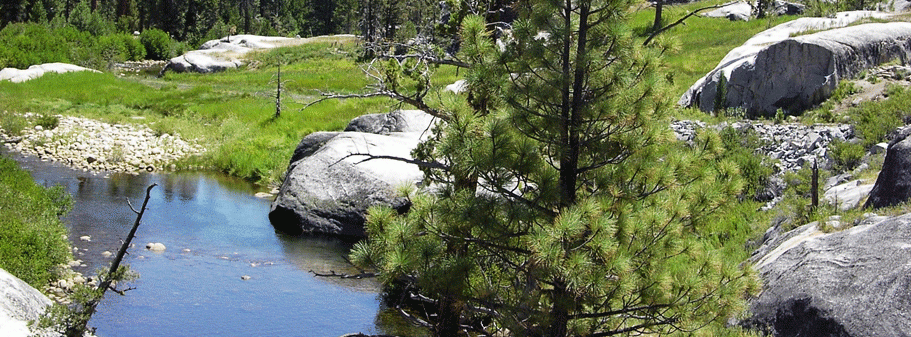Wilderness
Wildernesses consist of some of the most natural and undisturbed places in America. Congressionally designated wildernesses are protected and preserved in their natural condition by the Wilderness Act of 1964. These are areas where one can retreat from the civilized and mechanized world. The Sequoia National Forest has six designated wildernesses. Before heading out, be familiar with the special regulations that apply to wilderness. More information is available online at www.wilderness.net.
“Wilderness…an area where the earth and its community of life are untrammeled by man, where man himself is a visitor who does not remain…an area protected and managed so as to preserve its natural conditions.”
—1964 Wilderness Act
Monarch Wilderness
The Monarch Wilderness, shared with the Sierra National Forest, is split by the Kings Canyon Scenic Byway.
Beautiful and dramatic, this wilderness rises from 2,000 feet in elevation at the South Fork of the Kings River to over 11,000 feet. The vegetation ranges from chaparral to sub-alpine, with mountain meadows, lakes, and spectacular geological formations. Three trailheads access 30.5 miles of trails within the Monarch. Several of these trails also connect to the national parks’ backcountry.
Jennie Lakes Wilderness
The 10,500-acre Jennie Lakes Wilderness is a lovely mixture of lakes, meadows, forests, and streams. Mostly above 7,000 feet in elevation, this wilderness contains scenic variations of alpine and sub-alpine forest of red fir, lodgepole pine, and western white pine, with an abundance of wildflowers in the spring. The summit of Mitchell Peak is the highest point at 10,365 feet. Five trailheads access 26 miles of trails within the wilderness. Several of these trails also connect to the national parks’ backcountry.
Golden Trout Wilderness
The Golden Trout Wilderness is located in both the Sequoia and Inyo national forests and encompasses 475 square miles of pristine lakes, jagged peaks, and lush green meadows. The elevation of the Sequoia portion ranges from 4,800 feet to 12,432 feet. Vegetation includes grey and pinyon pine woodlands at lower elevations; Jeffrey pine at mid-elevations; and red fir, lodgepole, and foxtail pine at higher elevations.
Approximately 150 miles of trails are located on the Sequoia National Forest portion. Visitor permits (required only for overnight stays in the Golden Trout Wilderness) are available free from forest offices near wilderness entry points.
Dome Land Wilderness
The Dome Land Wilderness is known for its many granite domes and unique geologic formations. This semi-arid to arid country has elevations ranging from 3,000 to 9,730 feet. Vegetation is mostly pinyon pine and sagebrush. Much of this area was burned in the Manter Fire of 2000. The Bureau of Land Management (BLM) also manages part of this wilderness.
South Sierra Wilderness
Fragile meadowlands, forested ridges, rolling hills, and craggy, steep peaks describe this wilderness, which?is shared with the Inyo National Forest. The relatively gentle terrain of the 24,650 acres on the Sequoia portion is ideally suited to family-oriented recreation. Elevations range from 6,100 feet near Kennedy Meadows to the summit of Olancha Peak at 12,123 feet.
Kiavah Wilderness
The Kiavah Wilderness is located both in the Sequoia National Forest and on BLM lands. The Sequoia’s 42,100 acres feature eroded hills and canyons in the transition zone between the Sierra Nevada and the Mojave Desert.
*If your trip takes you into a wilderness in a neighboring national park:
- Overnight trips require a wilderness permit from Sequoia and Kings Canyon National Parks.
- Dogs are not permitted.
- Maximum group size is more restrictive.
- Bear resistant food storage container is required.
- Hunting is not permitted in national parks.


